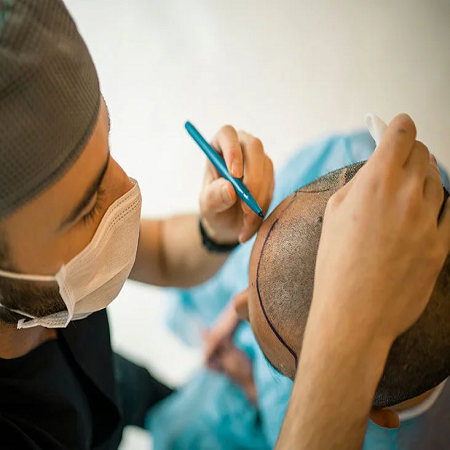Hair transplantation is a surgical procedure performed to treat hair loss or baldness. It involves taking hair follicles from one part of the body, typically the back or sides of the head (known as the donor area), and transplanting them into the bald or thinning areas (known as the recipient area). The transplanted hair follicles are resistant to baldness and continue to grow in their new location.
There are two main techniques used in hair transplantation:
- 1. Follicular Unit Transplantation (FUT): Also known as the strip method, FUT involves removing a strip of skin containing hair follicles from the donor area and then dissecting it into individual grafts. The donor area is then sutured, leaving a linear scar that can be hidden by surrounding hair. The grafts are then transplanted into the recipient area.
- 2. Follicular Unit Extraction (FUE): FUE involves harvesting individual hair follicles directly from the donor area using a small punch-like instrument. The donor area heals with tiny dot-like scars that are less noticeable than the linear scar in FUT. The extracted follicles are then transplanted into the recipient area.
Both FUT and FUE methods have their advantages and disadvantages, and the choice between them depends on factors such as the patient's hair type, extent of hair loss, and personal preference.
Hair transplantation is typically performed under local anesthesia on an outpatient basis. The procedure can take several hours or even multiple sessions, depending on the extent of hair loss and the number of grafts needed.
After the transplantation, the transplanted hair may initially fall out within a few weeks. However, the hair follicles remain intact, and new hair growth should start within a few months. The final results of a hair transplant are usually noticeable after 9 to 12 months.
It's important to note that hair transplantation is not suitable for everyone. A thorough evaluation by a qualified hair transplant surgeon is necessary to determine if you are a good candidate for the procedure. Other non-surgical hair restoration options, such as medications or low-level laser therapy, may also be considered depending on the individual's specific circumstances.

